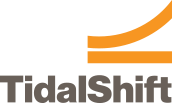LT 120 | Length: 1 day | Credits: 7 PDUs
Overview
Great managers can read people. They know that employees have different skills, different concerns and different levels of motivation. Further, they know that if they ignore these diverse needs, there is a greater chance that their employees will waste their energy moving in the wrong direction, get frustrated with a lack of success, or just disengage from a project or team. Consequently, through the support of DiSC®, they’ve learned to adjust their management style to the employee’s style and needs of the situation. This course is designed to help managers recognize the employee’s needs and remove barriers to performance.
Learning Objectives
Participants will learn how to:
- Read the DiSC ® style and developmental needs of different employees
- Understand the goals and fears of their employees
- Adapt their management approach to match the ability level and motivation of their employees
- Recognize and reduce their employees’ opposition and resistance
- Develop employees that are more energized, efficient, and committed
Audience
This course is intended for all members of a team, including team leader
Prerequisites
Complete DiSC ® on-line
Content Outline
MODULE 1
- Discover four styles of behaviour and explore the general preferences of your style
MODULE 2
- Learn how to recognize the styles of other people
MODULE 3
- Learn how to address goals and fears to gain commitment
MODULE 4
- Learn to adapt your management approach based on willingness and ability
Detailed Learning Objectives
Identify a way to understand differences
Learn how to adapt your managerial skills
Develop skills in recognizing people’s DiSC® styles based on behavioral cues
Understand how goals and fears affect commitment
Discover how DiSC® can help identify goals and fears
Create situations where other people can be energized and committed
Develop an action plan
Learn how DiSC® style, combined with ability and willingness, can help guide us to a management approach
Discover how this makes us more effective when leading someone toward a performance goal
Consider how DiSC® style affected your perception of his or her willingness to do the task
Remember that:
This is not meant to ‘pigeon hole’ or label anyone.
This is a model used to understand differences and improve our leadership capabilities.
There are no good or bad styles
There is no ‘best’ style
All styles have strengths and limitations
All styles can be more or less effective
People are a mixture of all styles
